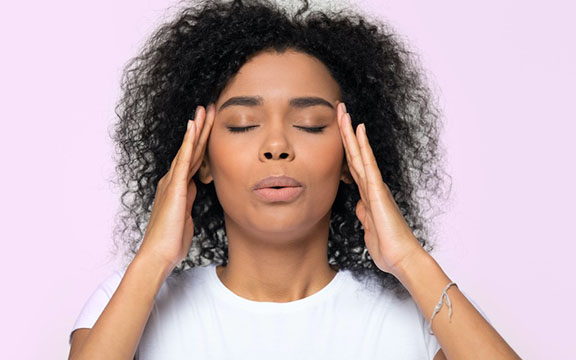
Here we are in the midst of the COVID-19 pandemic, and anxiety is through the roof. We’re surrounded by it in the media and in family and friends. It’s hard not to pick it up. And if we are anxious, our kids will pick it up too. Luckily, Yoga can help us understand anxiety, cope with it as it arises, and even learn to prevent the suffering of anxiety.
Like everyone else, I watch the news, and after a while, I start to feel like a kid cowering in my chair. My chest is tight, I’m wondering where I left my lamby. That’s when I TURN OFF the TV and pick up the tools of Yoga to kickstart my breathing again.
Understanding Anxiety
Anxiety is a normal reaction to the unknown. Anxiety has a job to do: to keep us safe by anticipating danger so we can prepare. The teachings of Yoga say that everything in nature is neutral, it can be good or bad depending on how we use it. So we can make good use of anxiety by taking the practical steps necessary to prevent infection (please sing along to the tune of I Wanna Hold Your Hand, “…to prevent Coronavirus, I’m gonna wash my haaaands!”). But when we feel anxiety during much of the day it becomes a problem. Chronic anxiety weakens our immune system and makes us more vulnerable to the disease that seems to be lurking everywhere (particularly inside my TV). Chronic anxiety keeps us in a state of stress arousal, which is when the body thinks it needs to gear up for fight or flight. That’s the opposite of the relaxation response which engenders healing and repair and builds up immune cells to fight infections.
Coping Skills
When we’re anxious, our breathing pattern changes. Instead of breathing slowly from our lower lungs, we begin to breathe rapidly and shallowly from our upper lungs. That’s the way we breathe when we need to sprint away from danger. Chronic anxiety creates a habit of restricting our breath to the upper chest which we may not even notice. And this leads to muscle tension in the upper chest and back, achy shoulders, and a stiff neck. When you add time spent hunched over your computer, the upper body gets locked into a habit of uncomfortable tension and tightness.
Gentle Chair Yoga Pose
That’s why it’s good to take a break regularly and stretch your upper body. You don’t even need to get up from your chair to do this:
- Bring your palms together in front of your chest
- As you inhale slowly, separate the hands and draw your elbows back as if to touch them behind your back
- Raise the chin slightly. When you reach a stretch that feels good to you, hold the pose for a breath, feeling the great stretch in the upper chest and back
- On an exhalation bring the hands forward until the palms are together in front of the chest
Repeat a few times, moving slowly and breathing deeply. Keep your mind focused on the sensation of the movement and stretch. Make sure to stretch and breathe in an easy, relaxed way, to avoid strain or pain. That way the sensations will be comfortable, and you’ll enjoy it.

You might want to set a timer, and once an hour take a break where you stretch, breathe, and focus on how it feels. This can help to cut through the physiological response to stress. It’s a back-door approach to lowering anxiety. It’s not easy to simply switch off the worry. Worry begins in the mind, but it winds up in the body, as tension and restricted breathing. But it’s easy enough to stretch and breathe deeply and allow that to cut through the stress response.
Resources
For lots of resources and online courses (many of which are free), please visit Integral Yoga TV. And explore additional tips for breathing practices to calm anxiety.
 About the Author:
About the Author:
Swami Vidyananda, E-RYT 500, C-IAYT began practicing Yoga in 1969 and has been teaching Integral Yoga® and training Yoga teachers since 1973. She became a swami (monastic) in 1983. She has taught and trained Yoga and meditation teachers throughout the US and Canada, as well as Australia, Europe, and India. She presently lives at Satchidananda Ashram–Yogaville, VA, where she teaches all branches of Integral Yoga, including Hatha, Raja, and Jnana Yoga, meditation, and yogic lifestyle. She continues to travel widely, training Yoga teachers and offering workshops on meditation, stress management, Yoga and the emotions, and mid-life meaning.
Over the years, Vidyananda has taught Yoga for many different populations, from college students to corporate managers, and children with Down syndrome. She co-developed the Integral Yoga Stress Management Teacher Training. She trained as a hospital chaplain and is a certified Yoga Therapist. Vidyananda founded the Integral Yoga Teachers Association (IYTA), and currently serves as chairperson for the Integral Yoga Teacher’s Council. For more info, visit: swamividyananda.com

